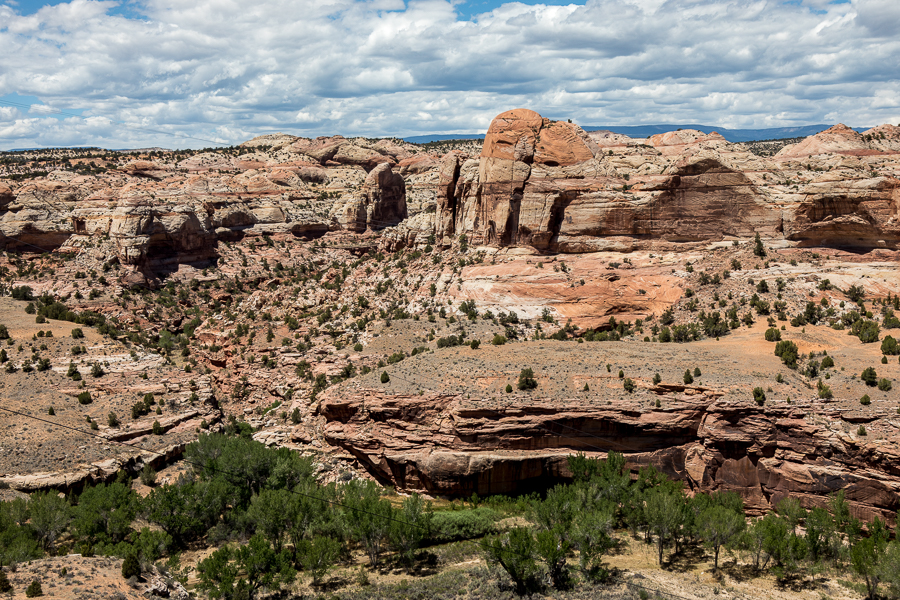
Utah Highway 12 is one of the most scenic roads in the United States, and a must-see for anyone who loves nature and history. This 123-mile-long road connects two national parks, Bryce Canyon and Capitol Reef, and passes through some of the most diverse and stunning landscapes in Utah. Along the way, you can explore red rock canyons, pine forests, pioneer towns, ancient ruins, and more.
In this blog post, we will give you an overview of Utah Highway 12, its history, its attractions, and some tips for planning your road trip. Whether you drive it from west to east or east to west, you will be amazed by the beauty and variety of this All-American Road.
History of Utah Highway 12
Utah Highway 12 was originally built in the 1920s as a dirt road to connect the towns of Panguitch and Torrey. It was gradually paved and improved over the years, and in 1985 it was designated as a Utah Scenic Byway. In 2002, it received the highest recognition as an All-American Road by the Federal Highway Administration, meaning that it has unique features that are nationally significant and cannot be found elsewhere.
Utah Highway 12 is also known as "A Journey Through Time Scenic Byway" because it showcases the geological and cultural history of Utah. The road traverses three major geologic regions: the Colorado Plateau, the Great Basin, and the Rocky Mountains. It also passes through several historic sites that tell the stories of Native Americans, Mormon pioneers, outlaws, and explorers who shaped this land.
Attractions along Utah Highway 12
There are so many things to see and do along Utah Highway 12 that you will need at least three days to fully enjoy them. Here are some of the highlights that you should not miss:
- Red Canyon: The western gateway to Utah Highway 12, Red Canyon is a stunning area of red rock formations that resemble miniature Bryce Canyon. You can hike, bike, or drive through the canyon and admire the hoodoos, arches, and tunnels.
- Bryce Canyon National Park: One of the most popular national parks in Utah, Bryce Canyon is famous for its amphitheaters of colorful spires called hoodoos. You can hike along the rim or descend into the canyon for a closer look at these natural wonders.
- Kodachrome Basin State Park: A lesser-known but equally beautiful park, Kodachrome Basin features sandstone chimneys, monoliths, and arches that contrast with the blue sky. The park was named by a National Geographic expedition in 1948 for its vibrant colors.
- Grand Staircase-Escalante National Monument: A vast and rugged area of canyons, plateaus, cliffs, and rivers, Grand Staircase-Escalante is a paradise for adventurers and explorers. You can hike, backpack, camp, fish, or drive on scenic backroads to discover hidden gems like waterfalls, slot canyons, petroglyphs, and fossils.
- Calf Creek Falls: One of the most popular hikes in Grand Staircase-Escalante, Calf Creek Falls is a 6-mile round-trip trail that leads to a spectacular 126-foot waterfall. Along the way, you can see ancient rock art and native plants and wildlife.
- Escalante Petrified Forest State Park: A small but fascinating park that preserves a forest of petrified wood that dates back to over 150 million years ago. You can walk among the colorful logs and learn about their formation at the visitor center.
- Boulder: A charming town that sits at the base of Boulder Mountain, one of the highest plateaus in North America. You can enjoy scenic views of the surrounding landscape from various overlooks or visit the Anasazi State Park Museum to learn about the ancient Puebloan culture that once inhabited this area.
- The Hogsback: One of the most thrilling sections of Utah Highway 12, The Hogsback is a narrow ridge with steep drop-offs on both sides. You will feel like you are driving on top of the world as you navigate this exhilarating stretch of road.
- Capitol Reef National Park: The eastern terminus of Utah Highway 12, Capitol Reef is a hidden gem among Utah's national parks. It features a long fold in the earth's crust called Waterpocket Fold that creates a variety of geological features such as domes, cliffs, canyons, arches, and bridges. You can also explore the historic Fruita district where Mormon settlers planted orchards along the Fremont River.